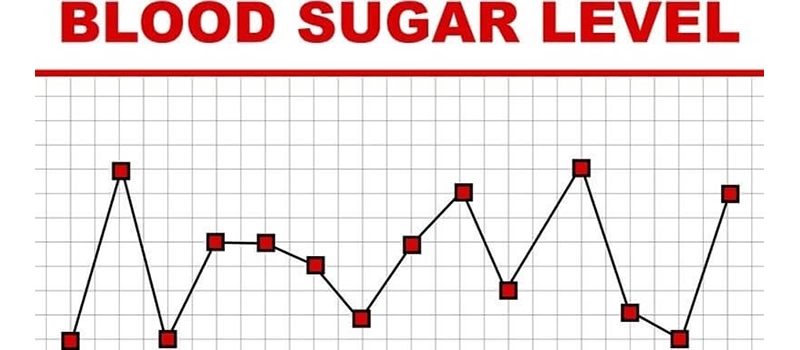
It’s a mistake to think that only diabetic people need to be concerned about their blood sugar levels. Keep in mind that people only develop diabetes after they’ve had high blood sugar levels for an extended period of time. However, the reality is that having high blood sugar can have detrimental health effects long before the person becomes at risk of developing diabetes.
We’ll look at those risks here, but the more immediate question becomes what are normal blood sugar levels for non diabetics? This is an easy question to answer. First it’s important to understand that normal blood sugar levels are more clinically called fasting blood glucose levels.
Glucose means sugar, and most people will know that fasting is the term for not eating. As such when you have lunch at noon and don’t eat dinner until 6pm, you’re ‘fasting’ for some 5+ hours. Normal blood sugar levels for non diabetics are the same as fasting blood sugar levels.
Similarly, the clinical term for normal blood sugar levels after eating for non diabetics is postprandial blood glucose. This measurement is taken 1 to 2 hours after the person eats a meal. It provides information on how well your body reacts to the food you eat.
In the interest of keeping this all engaging too, you may have heard Royal Family members referred to as ‘Blue Bloods.’ So do Prince Charles and the rest of the clan actually have blue blood? Of course not, they’re red-blooded just like every other human on the planet. However, there are some REAL blue bloods out there. They’re just not humans – or mammals for that matter – and it’s fairly safe to assume they’re never at risk of high blood sugar either.
Read on.
The normal blood sugar levels for non diabetic people is around 70-99 mg/dl (milligrams per deciliter). Minor differences above and below this number are normal. However, people who come in at well over 99 mg/dl should understand that they are at risk of pre-diabetes and other health risks related to high blood sugar. We’ll list out those risks here shortly.
Normal blood sugar levels after eating for non diabetics are less than 140 mg/dl. In the same way as it is with fasting levels, any number that is considerably in excess of this one are also an indicator of risk of developing diabetes and having other serious health risks.
There’s also another measurement of blood sugar levels called the HbA1c test. It is different from other measurements in that it doesn’t measure blood glucose levels directly. Instead, it’s a measure of how the highs or lows of your blood glucose levels tend to be over a two to three month period.
While this test is not given the same importance as postprandial or fasting blood glucose tests, a non-diabetic person’s HbA1c results should be less than 6%.
Well, it’d be remiss to not say that the primary cause for concern here would be actually developing diabetes. But that’s just the first and foremost one. Other health risks from high blood sugar include:
Increased risk of heart disease
Increased risk of stroke
Kidney damage
Nerve damage
Eye damage
Skin problems, including pruritus
Chronic dehydration
Chronic fatigue
Gastrointestinal (stomach) problems
Oral health problems
Alright, we told you we would talk about life forms that actually have blue blood. While this admittedly has nothing to do with normal blood sugar levels for non diabetics, we think it’s still plenty interesting.
So where this starts is the fact that most animals on earth have iron-based blood and oxygen is carried through the blood around the body with hemoglobin protein molecules. Mollusks and arthropods are shelled organisms, and some of them have copper-based blood and transport oxygen the same way, but with hemocyanin protein molecules.
Now, to be fair, the blood of these creatures isn’t blue while it’s still inside them. It’s only when the blood of these mollusk and arthropods is exposed to oxygen. So who are the blue bloods of the animal kingdom?
Horseshoe Crabs, Squid, Octopi, Burgundy Snails, Crabs, Crayfish, Lobsters, Shrimp, Tarantulas and Wandering Spiders, and the Emperor Scorpion, among others.
With our understanding of normal blood sugar levels for non diabetics in place, it might be best to wrap things up here by talking about medications and other approaches to lowering blood sugar. For people with high blood sugar that has already led them to develop diabetes, Onglyza (Saxagliptin) or Prandin (Repaglinide) are commonly prescribed medications. Precose (Acarbose) is another.
However, it’s true that the best approach is to try and lower your blood sugar naturally before you get anywhere near becoming diabetic. There are ways to lower blood sugar naturally, including:
Increased physical exercise
Eat smaller portions
Reduce carbohydrate intake in diet
Increase fiber intake in diet
Choose foods with lower glycemic index
Drink more water to improve hydration
Reduce stress levels and manage existing stress
Getting better quality sleep
Another thing you can do to get closer to normal blood sugar levels for non diabetics is to mix 2 teaspoons of apple cider vinegar with 8 ounces of water. This makes it drinkable, and the ACV lowers fasting blood sugar levels by inhibiting its production in the liver. If you’re going to go this route, however, do make sure you discuss it with your physician if you are taking blood-sugar lowering medications.